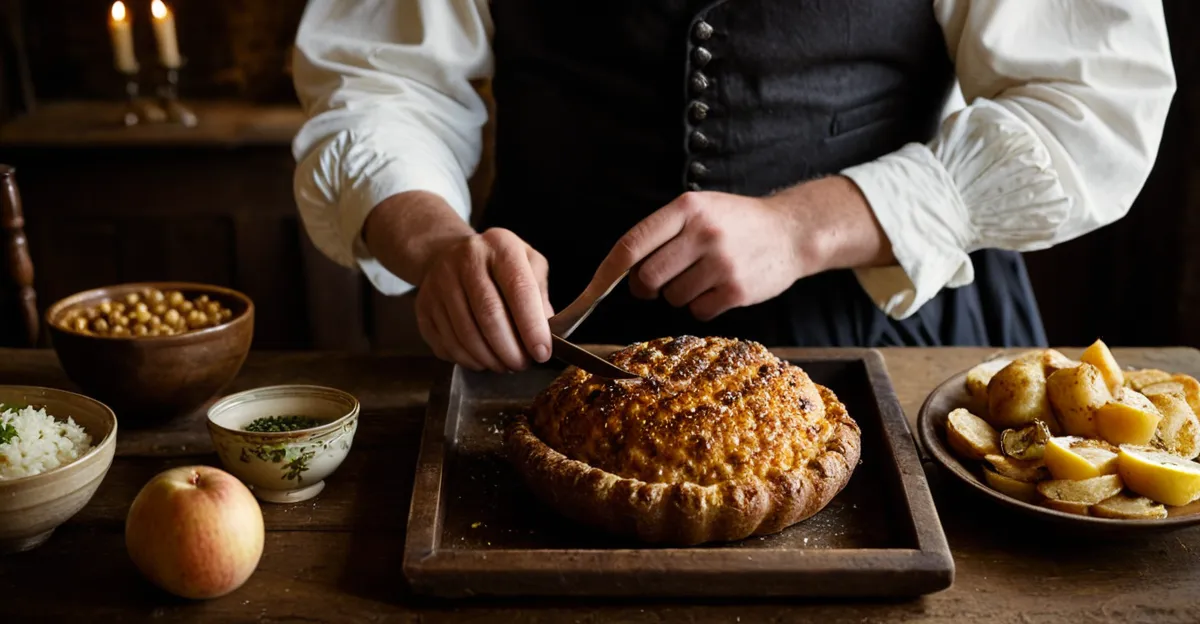Early Historical Influences: Ancient Britain to Medieval England
The Roman influence on British food marked a pivotal shift in culinary practices. Romans introduced new ingredients such as olives, herbs, and wine, alongside advanced cooking techniques, including baking and the use of metal cookware. These additions diversified Anglo-Saxon diets, historically based on simple grains and meats, enriching flavor profiles and preparation methods.
Anglo-Saxon and Viking settlements contributed further by emphasizing hearty porridges, stews, and smoked fish. Their reliance on preserved foods was a practical response to Britain’s climate and seasons, adding rustic textures and tastes to the medieval table.
Also to discover : How can you make a traditional Lancashire hotpot at home?
The Norman conquest profoundly affected both aristocratic and commoner diets. The Normans brought elaborate dishes and refined techniques, favoring spices and game meats. The upper classes enjoyed sophisticated meals, while commoners gradually adopted some Norman culinary customs. This era blended native and foreign influences, laying foundations for medieval cuisine characterized by variety and social distinction. Notably, indigenous ingredients like barley, cabbage, and root vegetables remained staples throughout this complex historical tapestry.
Era of Trade and Exploration: Spices, Sugar, and New Worlds
The spice trade in British history marked a dramatic transformation in culinary practices. As trade routes expanded during the Age of Exploration, exotic spices like cinnamon, cloves, and pepper became accessible, deeply influencing British cooking. These spices were not just flavour enhancers; they signified wealth and global connectivity, altering medieval cuisine significantly.
Also to see : What are the essential steps to prepare a traditional Welsh rarebit?
Sugar’s arrival revolutionized British desserts and pastries. Initially a rare luxury, sugar became a staple ingredient, enabling new sweet creations previously unimaginable in England’s food culture. Its increasing availability fueled innovations in confectionery, baking, and preserves, changing daily diets and festive meals alike.
The Age of Exploration foods also introduced new fruits and vegetables from the Americas, including potatoes and tomatoes. Although their widespread adoption took time, these ingredients eventually became foundational to British cooking. The fusion of old and new flavours during this period set the stage for a more diverse and dynamic culinary landscape, reflecting the expanding horizons of British society.
In short, the spice trade and sugar’s integration into UK cuisine illustrate how international exploration reshaped eating habits, making British food more varied, flavourful, and globally informed than ever before.
Colonialism and International Influences
Colonialism reshaped British Empire food history profoundly, introducing new ingredients and culinary traditions. Tea, initially a colonial import from Asia, became a national symbol embedded in everyday British culture. Its ritual consumption illustrates how colonial goods influenced social customs profoundly.
Indian and Caribbean cuisines notably impacted British food. The introduction of spices and curry during colonial times transformed British palates, blending foreign flavors with native recipes. This fusion led to popular dishes such as chicken tikka masala, which reflects adaptation and acceptance of colonial culinary elements within British diets.
Potatoes, another colonial introduction, revolutionized staple foods due to their versatility and nutritional value. Their widespread cultivation and use in everyday meals illustrate how international ingredients were integrated into British eating habits.
The colonial period also ushered in greater experimentation with international flavors, encouraging cooks to innovate traditional dishes by incorporating techniques and spices from the empire’s diverse territories. This era marked a turning point where British food evolved beyond insular influences, embracing international flavors that persist in contemporary British cuisine today.
Industrialization and Urbanization: Changing Food Production and Consumption
Industrialization in Britain triggered major shifts in food production and consumption. The industrial revolution food innovations introduced mechanized milling and canning, enabling mass production and longer shelf life. This advancement allowed food to be distributed widely at lower costs, changing how people accessed ingredients.
Urbanization redirected diets; the rising working-class population sought affordable, convenient options. This gave rise to popular street foods such as meat pies and fish and chips, catering to fast-paced city life. Easy-to-prepare meals became essential as long working hours limited home cooking time.
Victorian Britain introduced social customs like afternoon tea, which combined leisure with new food rituals, often including cakes and sandwiches. Moreover, tinned foods gained popularity for their convenience and preservation benefits, marking the early stages of modern convenience foods in UK history.
These changes illustrate a pivotal period when Britain moved from localized, seasonal eating toward industrial food systems. The resulting diets balanced practicality with emerging traditions, reflecting broader societal transformations. The Victorian eating habits highlight the era’s blend of innovation, social change, and evolving culinary culture that laid groundwork for today’s diverse food landscape.




